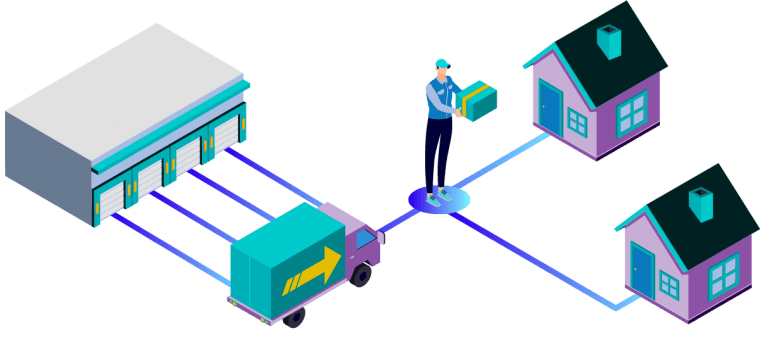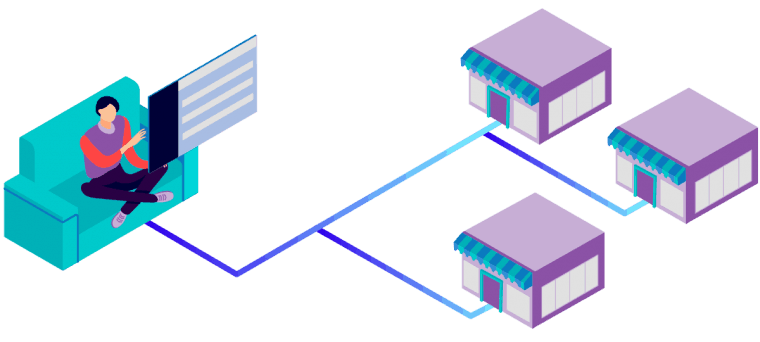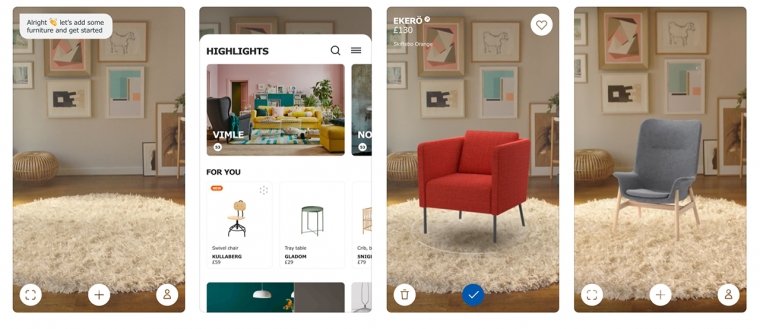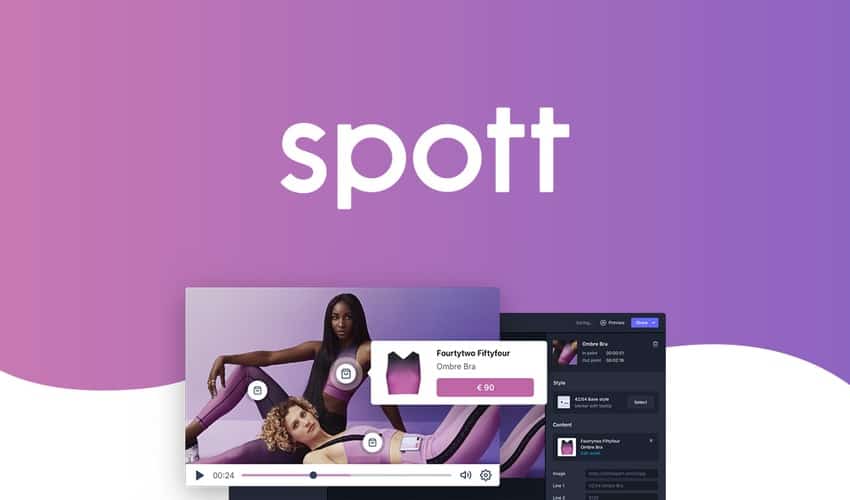For years, brick and mortar retailers were able to capture the interests of consumers without any difficulty. The debut of the internet onto the scene during the 1990s barely caused any consumer disruption. Most of the customers were still loyal to their retailers and would make their way to physical stores where they would receive customer service in-person from retail employees. However, the days of that being consumers’ only option are long gone thanks to the success of e-commerce sites such as Amazon and e-Bay where customers can make purchases from the comfort of their own homes.
Thanks to the internet and the latest wave of innovative technology, e-commerce is leaving an indelible footprint on the economy that goes beyond purchasing a product from the comfort of one’s home. Other retailers are now joining the e-commerce bandwagon to leverage the ever-growing online market, and with the potential it withholds, it must be utilized with implementing strategies of a great user experience, SEO, content optimization, branding, etc.
The famous Toys R Us brand intends to shut down about 800 stores as it intends to discontinue operations in the U.S. Best Buy is following the same trend by shutting down around 250 small retail websites where they sell mobile phones. Foot Locker, is shutting down 110 of their stores to narrow down their focus on only the most profitable ones. Through e-commerce, these retailers can leverage their stores as logistics centers and showrooms.
This is a tactic that IKEA, the world’s largest furniture seller, is currently integrating into its marketing strategy. This comes after IKEA realized that it was losing market to smaller market entrants who used e-commerce to sell directly to consumers. IKEA noticed that these smaller start-ups were able to offer competitive prices to customers by cutting out expenses from large warehouses and expensive marketing campaigns. An initiative that IKEA was keen on following.
What is E-commerce?
Before we get into the core of how IKEA leverages e-commerce into its marketing strategy, let’s first debunk e-commerce. Simply put, e-commerce is the selling and purchasing of goods or services over an electronic network, preferably the internet. E-commerce and e-business are two terms that are used most of the times interchangeably. However, e-business encompasses a lot more than e-commerce. E-Commerce is just a part of e-business.
When talking about e-commerce, one simply has to mention WooCommerce. This is one of the best and most popular e-commerce platforms allowing you to turn your regular site into an online store. Besides its own capabilities, WooCommerce is known for the huge array of plugins that can be used to enhance it.
Our favorite ones include:
WooCommerce Table Rate Shipping – your go-to plugin for calculating shipping costs and implementing advanced shipping rules. With it, you have the power to create, hide, import, export and forcibly use as many shipping methods as you’d like. Along with this and its other features, you get something called logged-in user rules which are basically shipping rules for logged-in users only and can help boost site registration numbers.
WooCommerce Order Export – exporting data from your WooCommerce store comes easily with this plugin, especially when it comes to order data. The plugin can generate exports for you which are then delivered to your inbox or through FTP. You don’t have to manually request an export, they can be generated automatically by the plugin. The format of the exported data is CSV with columns you can reorder. What’s more, the plugin knows which orders were already exported meaning you won’t get any redundant data.
Direct Checkout for WooCommerce – one of the easiest ways to optimize your WooCommerce store is to skip the cart and send customers directly to the checkout. This can be implemented on your store using this plugin and the buy buttons it creates. These buttons can go anywhere on your site and, once clicked, send the customer automatically to the checkout thus skipping the cart and saving time.
There exist several types of e-commerce business models. The most common models are business to business (B2B), business to consumer (B2C), consumer to business (C2B), and consumer to consumer (C2C). A B2B model involves two companies or businesses conducting business with each other. A prime example is when manufacturers sell products to wholesalers who in turn sell to retailers. A B2C business model is the most common and is usually what most people think e-commerce entails. It consists of businesses selling products to the public.
In a C2B business model, consumers create products and services that are consumed by businesses. In a C2C business model, consumers sell to consumers, the kind that takes place in online classified ads, shops like Etsy, or forums like Craigslist. Other levels of e-commerce business models include government to business (G2B), business to government (B2G), and government to consumers (G2C). These last three are not as common but are slowly and surely beginning to grow.
How IKEA is Leveraging E-commerce
Part of the reason why IKEA made the switch to e-commerce, albeit really late (2016), is the shift in consumer behavior. Unlike back in the days where giant retailers chose the consumer, nowadays, the consumer is more aware and can make personal product choices and decisions. Also, many customers nowadays prefer to conduct a majority of their purchases online, especially the millennials.
On realization that they were losing profit to their competitors, IKEA embraced e-commerce and opened their online business to about 14 of their 28 customer countries. IKEA immediately recorded an impressive 30% spike in online sales to the tune of $1.6 billion. Although this was a small fraction of their total sales, it was pretty impressive nevertheless. In Australia alone, the IKEA website had been experiencing over 40 million visits per year, as reported in 2016. In 2017, IKEA.com reached 2.3 billion visits globally.
In Q3 last year (2017), IKEA launched IKEA Place, an augmented friendly mobile app for iPhone users. The app allows you to snap a photo of a location in your home or office where you need an IKEA item placed. Once you take the photo, you can then browse and add in lifelike pictures of furniture into the same picture to get an overview of how the furniture might fit in your desired space. Once satisfied with the picture, you can make your way to the IKEA website and place an order of the same product.
Apart from utilizing its online website marketplace, IKEA is juggling the idea of diversifying and selling its products through other online avenues such as Amazon. While it hasn’t revealed any details of who it plans to partner up with next, this might be a good strategy that may improve upon its overall sales. At the moment, however, IKEA is selling its items only through its websites.
What Companies Can Learn from IKEA
Creating a Strong Brand
IKEA is a highly recognized global brand that sells a wide variety of quality home-based furniture products. Their brand became an instant hit with customers who were willing to assemble the products themselves while saving up on prices. Not to mention, their products are high quality and are designed to create value and maximize on space. Being the only business offering such a sweet deal, IKEA gathered a massive global following along with rock-solid customer loyalty.
Investing in Content Marketing
IKEA knows how to engage and interact with its customers, and it does so via multiple online avenues. For example, they use visuals in their social media engagement strategy, and more.
From posting home tour videos on YouTube to inspiration posts on Pinterest, Instagram, and Twitter, IKEA has mastered the craft of creating content that their customers are dying to see.
They also respond to any customer inquiries via social media and are quick to address any complaints. This enables them to not only promote their products but also to strengthen their customer relationships. Creating interactive content and promoting it across different channels are the two commanders that lead the way towards building a digital empire. Right behind them is the cavalry in the form of call-to-action buttons, tagged products, metrics, GIFs and insights. If these elements sound like an ideal addition to your business’ arsenal, you should shift your attention towards Spott. Numerous customizations and tools with simplicity which fits in a few clicks for rocking results is why you should definitely give it a shot, especially with the delicious discount they’ve cooked up.
Creating an Experience, Not just a Product
IKEA is well-aware of the fact that anyone can purchase a product from anyone and anywhere. However, if you offer your customers an unforgettable experience, you are going to stand out, and the chances are that your customers will become repeat customers. IKEA creates this experience through their uniquely designed stores and warehouses where customers can shop with ease and even snack and play while shopping.
Conclusion
Although IKEA arrived at the e-commerce platform slightly late, it has managed to oust other players who have long been in the field. A success it majorly attributes to having an impressive marketing strategy. Apart from providing quality goods at affordable prices, IKEA goes out of its way to ensure that it constantly interacts with its customers – perhaps a research tactic aimed at gathering consumer information. Nevertheless, IKEA represents an impressive case where a global company can leverage e-commerce to boost sales and customer interaction.






